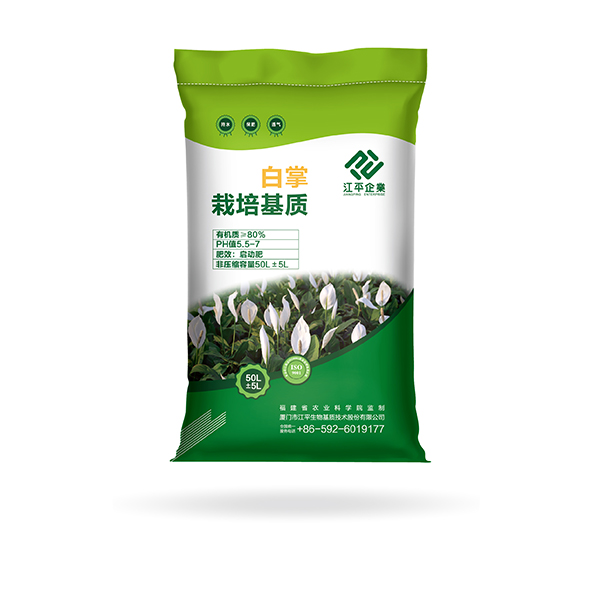Particle size (mm) | 0-30mm |
pH | 5.5-7 |
EC (ms/cm) | ≦1 |
Unit weight (kg/m3) | 180-220 |
Fertilizer efficiency | Starter fertilizer |
Packing capacity | Non-compression packing, 50L±2L/pack |
● It is a mix of imported peat moss, coconut powder and agricultural waste materials after substrate treatment, with a scientific ratio. It is free of harmful pathogenic bacteria, worm eggs, grass seeds or pollution to the environment.
● This substrate enjoys good permeability and loose density, which is good for root growth of the Spathiphyllum plants.
● This substrate promotes plant growth thanks to its moderate pH value, richness in organic matter and added appropriate amount of starter fertilizer.
● Fill 1/3 of the pot with soil.
● Put in seedling and pour substrate with a distance of 2cm from the top edge and then press it gently.
● Water the substrate slowly and thoroughly until water flows from the bottom of the cultivation media.
● Provide appropriate shading for seedling recovering based on the quality of the transplanted seedlings and follow regular cultivation operations after 3-5 days.
● During storage, the substrate shall be stored in a cool and airy place and kept out of the sun for fear that the effect of moistening agent in the substrate will be affected.
● If the substrate is too dry, wet it until the state that when it is crumpled in hand, water between fingers do not drop down. Then the substrate can be used.
● Do not press the substrate excessively in transplanting to avoid poor gas permeability. Normally, it would be enough to press it gently with palm for twice.
● Watering shall be done in a careful and slow way until it is watered thoroughly. Flood irrigation shall be avoided.
● Water management shall be adjusted on the basis of different climate conditions.


